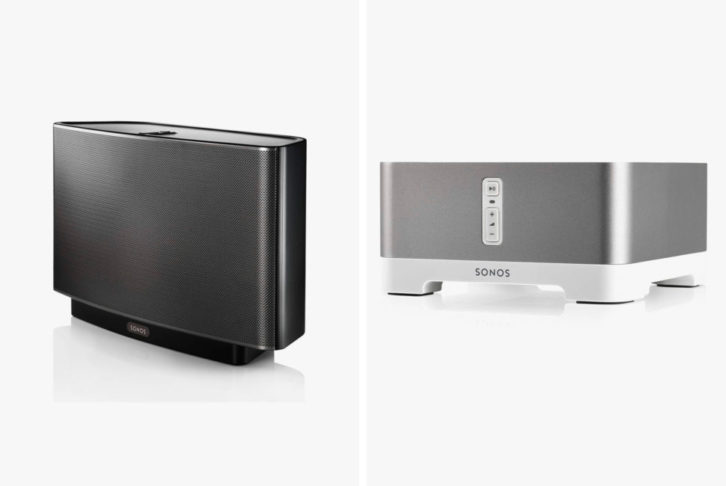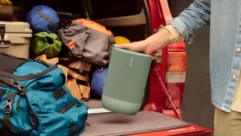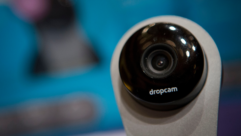UPDATE: Sonos will issue a new app and OS for it’s speakers in June saying the new platform is necessary for hi-res audio support and more advanced features
UPDATE: After trying hard to justify/sell the concept that premature landfill was a good thing, Sonos is doing away with the controversial Recycle Mode. The trade-up program will continue without the bricking part. Customers who own eligible legacy products can still get the same 30 percent discount without having to harm any inanimate objects that had life in them yet.
With the change, The Verge reports that Sonos is now giving customers full control over what happens with the older gadgets they’re “trading” up from. They can keep it, give it to someone, recycle it at a local e-waste facility, or send it to Sonos and let the company handle the responsible recycling part.
Sonos quietly removed Recycle Mode from its app last week and replaced it with language asking anyone seeking the discount to call customer service. Within the next few weeks, Sonos will update its website with a new flow for the trade-up program that no longer includes Recycle Mode; no phone call required.
Sonos received withering criticism when Twitter user Devin Wilson brought attention to Recycle Mode and raised general (and obvious) questions around the company’s sustainability practices. At the time, Sonos said it wasn’t forcing anyone to participate in the trade-up program, and customers who wanted to use legacy devices could continue doing so. It kept Recycle Mode in place for those who did want the 30 percent deal. When triggered, Recycle Mode would start an irreversible 21-day countdown, after which the device would be permanently bricked. Sonos said it went this route to ensure that consumer data was being erased on recycled products. It also said something about not wanting people to be disappointed when legacy gear could no longer play in the Sonos ecosystem.
Now, Sonos will instead encourage customers to perform a factory reset before bringing their old gear to an e-waste recycler. And to use their brains andfApple experience to realize that sometimes legacy devices can’t participate in updated networks and ecosystems. Or ports.
Legacy products that are eligible for the Sonos trade-up include the original Sonos Play:5, Zone Players, and Connect / Connect:Amp devices manufactured between 2011 and 2015. All other products are considered modern and will continue to get software updates after May.
Legacy products will still stop getting software updates sometime in May. There was sufficient confusion around that concept that CEO Patrick Spence posted an apology and said “all Sonos products will continue to work past May.”
“While legacy Sonos products won’t get new software features, we pledge to keep them updated with bug fixes and security patches for as long as possible,” Spence wrote in January. “If we run into something core to the experience that can’t be addressed, we’ll work to offer an alternative solution and let you know about any changes you’ll see in your experience.
Legacy products obviously won’t get any new features. But—ustomers who want to keep using old products will have to fork them off from their primary Sonos system — otherwise, all products on the network will stop getting software updates when the cutoff happens. “We are working on a way to split your system so that modern products work together and get the latest features, while legacy products work together and remain in their current state.” The company will have more specifics to share in the coming weeks.

How did this all start?
In a blog post today, Sonos opens with this statement about the end of support for Sonos legacy devices: Starting in May 2020, some of our oldest products will no longer receive software updates or new features. We want to explain why and your options.
Sonos debuted 20 years ago–before the first iPhone as they point out, and during the MySpace years before lots of today’s adults were born. They proudly claim their role in the merging of audio and computing — the ubiquitous smart speaker as it was not yet called.
The history lesson in the blog post is to help set up the reality that hardware don’t last forever. I no longer have my flip phone or that other phone that could be Transformer-ed into something that looked like a old Olympus PEN camera, but in red.
The company points out that 92% of their products are still in use today, which is pretty cool. It’s the remaining 8% that are sunsetting–stretched as they are to “their technical limits in terms of memory and processing power.”
As such these Sonos legacy products will no longer receive software updates. They will still receive security patches in response to any emerging threats, but they won’t get new features and they eventually won’t really play well in the ecosystem.
As some in the tech press suggest you could give the legacy products their own isolated network. I probably won’t unless my daughter wants her college apartment to be Sonos Retro. She probably won’t either, though she proudly drives a 13-year-old car.
Sonos says your options are to, simply, keep using the products until something inconvenient happens. Or you can take advantage of their controversial Trade Up program in which you get 30% towards new Sonos gear. To do that, you have to brick the old gear first with the one-way Destructo Switch that Sonos kindly built into these products back when they were born. Very Blade Runner. (It’s actually called Recycle Mode). If you elect Recycle Mode, please take to your electronics and metal recycler. If you don’t have an e-cycler please take advantage of Sonos offer to ship the former product back to them. I can understand why Sonos prefers Recycle Mode to Reuse Mode. It’s not great for branding and reputation when second-hand speakers don’t work as expected.
From May, support will end for the following Sonos legacy devices with software updates or new features:
- Sonos Bridge
- Sonos Connect
- Sonos Connect:Amp
- Sonos CR200 wireless remote
- Sonos Play:5 (Gen 1)
- Sonos Zone Players (ZP90, ZP100, ZP120, etc)
If you’re not sure if your products are affected, you can check in the System tab in your sonos.com account.










